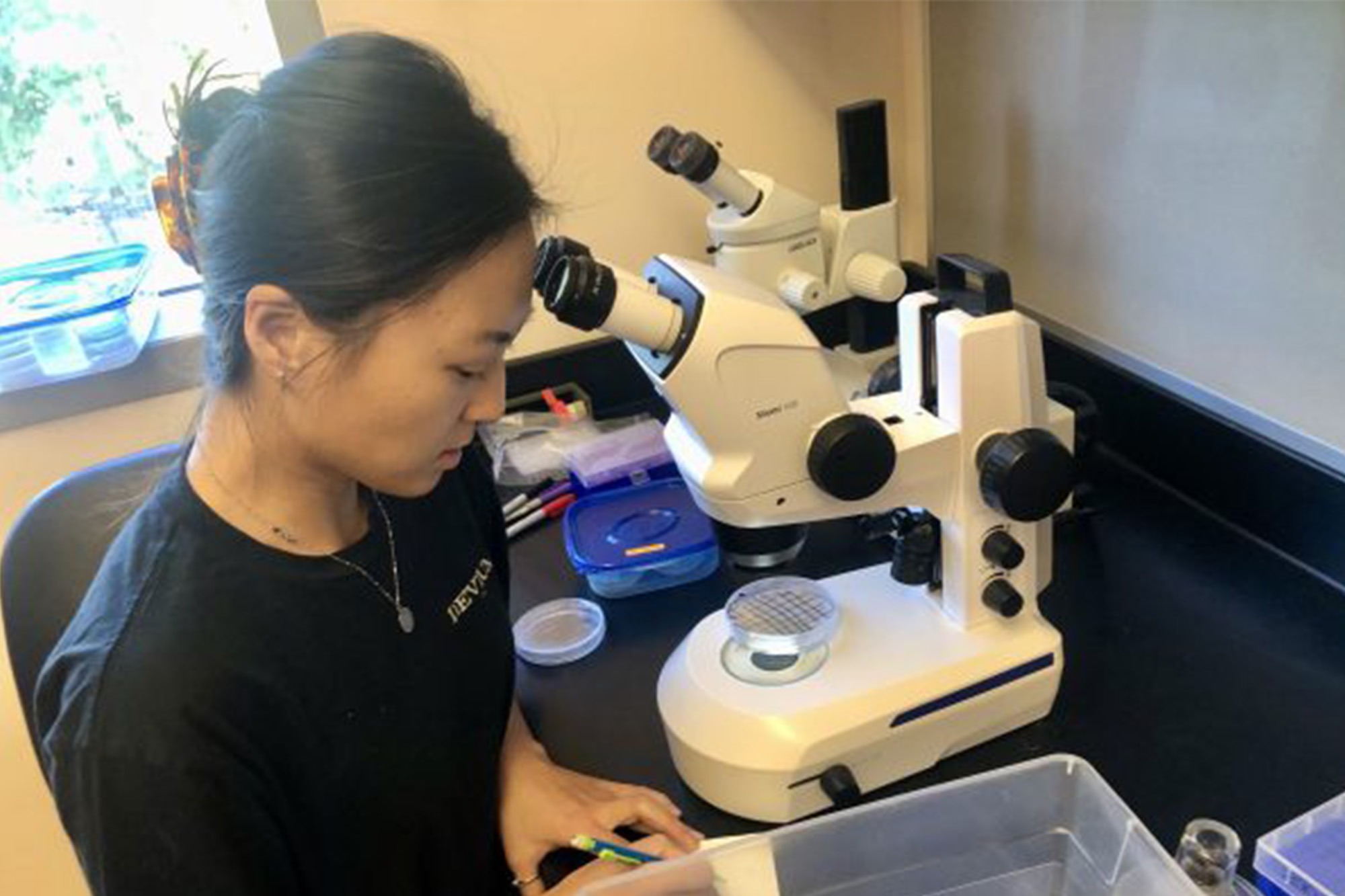
March 13, 2024
Above: Post-doctoral researcher (Werner lab, School of Biological Sciences) examines nematodes recovered from the Great Salt Lake. Credit: Brian Maffly.
Brine shrimp and brine flies aren’t the only animals inhabiting the lake. Utah biologists find tiny nematodes in its reef-like microbialites.
Scientists have long suspected nematodes, commonly known as roundworms, inhabit Utah’s Great Salt Lake sediments, but until recently, no one had actually recovered any there.
It took a University of Utah postdoc with a hammer and loads of field experience to solve the puzzle. Along with biology professor Michael Werner, postdoctoral researcher Julie Jung announced in a study published this week that they discovered thousands of tiny worms in the lake’s microbialites, those reef-like structures that cover about a fifth of the lakebed.
Their initial attempts failed to find nematodes in lakebed sediments, prompting Jung to take a hammer to samples of microbialites where she struck biological pay dirt. Breaking up the carbonate structures yielded thousands of nematode specimens representing several species, resulting in a significant discovery.
Previously, just two multicellular animals have been known to inhabit the lake’s highly saline waters—brine shrimp and brine flies. Now there is a third, opening several new lines of inquiry into Great Salt Lake’s largely hidden web of life.
With more than 250,000 known species, nematodes comprise the world’s most abundant animal phylum in both aquatic and terrestrial biospheres. They live deep in the oceans, deep underground, and in frigid, arid conditions. The nematode species Caenorhabditis elegans is used in science as a model organism whose genome has been thoroughly mapped.
The new Great Salt Lake findings represent the most saline environment where nematodes have ever been recovered, according to Werner, an assistant professor in the university’s School of Biological Sciences.

A researcher collects sediment samples among microbialites on Great Salt Lake in search of nematodes. All Photo Credits: Michael Werner.
“Just what is the limit of animal life? What environments can animals actually survive? That captures some imagination about looking at other planets where we might find complex multicellular life,” said Werner, the senior author of a study published in the Proceedings of the Royal Society B. “If there was life also on Mars, it might have looked a little bit like the [lake’s ultrasalty] North Arm right now.”
But there’s even more to the story. In a “crazy” side experiment, Werner’s team fed bacteria from the lake to C. elegans to see what would happen if they exposed these worms to the lake’s water, which is 50 times more saline than this species’ usual habitat.
After 24 hours, these worms were still alive, while those nourished on the model species’ usual diet were dead within five minutes.
“We didn’t expect it to work, but it did!” Werner exclaimed. This suggests that bacteria can help nematodes adapt to highly saline conditions, but more research is needed to identify the mechanisms at play.
Read the full article by Brian Maffly in @TheU.
